Kimberly V. Althage & Connor Canavan – March 10, 2021
This is an excellent example of the 1950 Ford Shoebox. Originally called “Ford” because the company never gave this vehicle a proper name. The public dubbed the car, and it has since been known as the “Shoebox” for its body style, and it is a very important vehicle in Ford’s history. The shoebox was the first vehicle produced after WWII by any of the Big 3 automotive manufacturers: those being Ford, General Motors, and Chrysler.
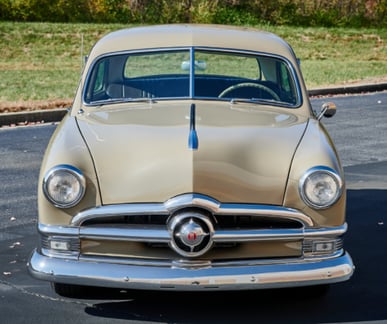
The world was still in recovery at the end of WWII in September of 1945. The Shoebox was the first vehicle to be produced on a mass scale in 1949 and was at a price point of $1,511 in 1950.
This was the beginning of the Chrome generation of cars. The chrome really stands out on these Shoeboxes. There is a reason chrome was used on vehicles in the 50’s and beyond. Chrome was brighter and had the added benefit of lower maintenance than the previously used nickel-plated finishes. This is most prevalent on the front bumper, with an extremely unique design. This centerpiece in the center of the grill was nicknamed the “Bullet”. And this is a single bullet! Beginning in 1951, Ford changed the front end to have 2 distinct “Bullets”, or as Ford advertised on the next model Shoebox, the “Duel-bullet”.
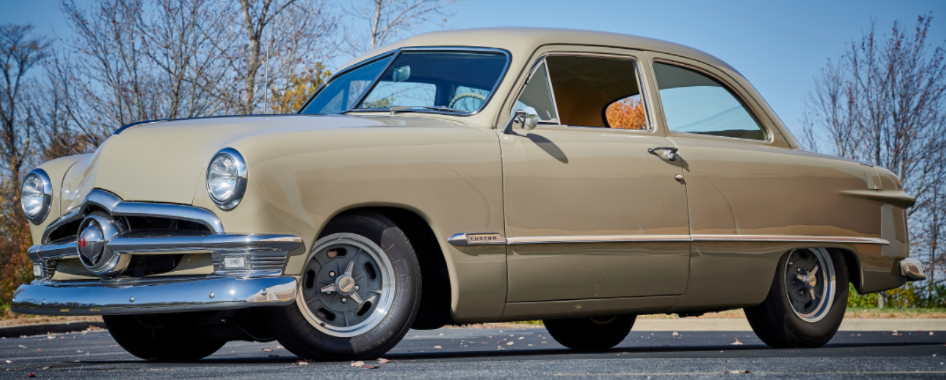
Those first Shoeboxes off the line in 1949 had two trims available. An individual could buy either the “Standard” or the “Custom”. In 1950 Ford changed the names of the trims to better market the vehicles. They changed the “Standard” to “Deluxe” making it appear and sound more elegant. Then Ford Changed the “Custom” to “Custom Deluxe”. As a result, all 1950 Showboxes read either “Deluxe” or “Custom” on the side with “Custom” being the higher end option of the two. This beauty you can see is the Custom Deluxe.
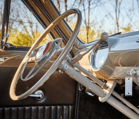
Being a True Restomod, not everything in this interior is original, but a lot is. And what isn’t original pays tribute to what was. For example, the steering wheel. This is the original wheel that came with the car, and the shifting mechanism looks the same but is not. This Restomod has completely configured its 3 on a tree transmission to run like a standard automatic, while keeping the style of a 1950 Shoebox.
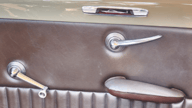
As we look at the doors, we can see the window roller and the handles are original, while the brown stitching most likely is not. It has been updated to look and feel like a Restomod, with the brown color paying tribute to its time. Another noticeable tribute and one for our soldiers who fought in WWII, are the visible planes throughout the vehicle. In fact, the front dash looks like a propeller blade with its chrome tips.
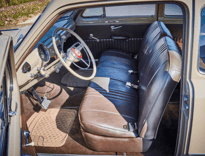
These seats are not original, but were redone to match perfectly with the doors, and are amazingly comfortable. The couch style bench seats allow more people to fit and sit, and they’re made to easily hop into the back. No button or lever is needed, simply pull for them to move forward. And if you take a good look in the back, you will see the brown stitching pattern extends all the way to the back window.
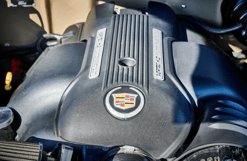
The engine is far from original. Back in 1950 the Custom Deluxe Shoebox had a 3.9L 239 Cubic Inch Flathead V8. Under the hood of this 1950 shoebox is a modern 5.3 LS-Based V8 paired up with a 4L60E automatic transmission. (With a Cadillac cover over it) That produces 355 HP on a vehicle that weighs less than 3000 lbs. This engine will reach 5800 RPM and the gas mileage is 16 city, 22 hwy. That Cadillac symbol you see is really just the cover. This engine was produced by GM who owns Cadillac, but it’s not a Cadillac-made engine.
It’s super cool and a true “Restomod” with a GM engine. The exterior looks completely stock, and the interior has the look and feel of its 1950 origin. Plus, the engine has been completely restored. This vehicle will drive the same as any other modern-day vehicle.

Comments